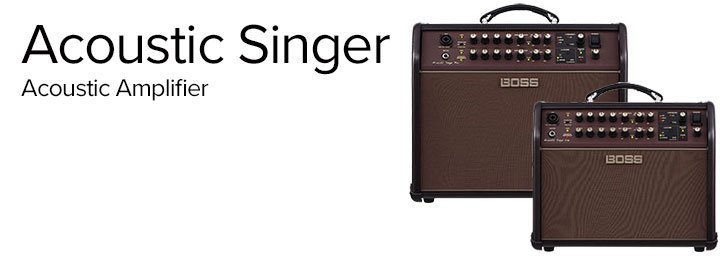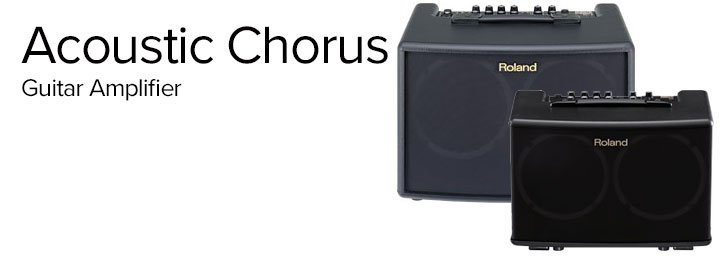In recent years, we’ve seen a huge boom of popularity in acoustic guitars. Because of this, it should come as no surprise that we’ve also seen a surge of popularity towards acoustic amplification. Acoustic amps cater to the needs of players wishing to amplify the sound of their prized acoustic guitar. They are used either onstage, or to take advantage of the lush soundscapes that can be created by adding effects such as reverb, delay and chorus to an acoustic sound.
A question often asked by many acoustic guitarists is “Why exactly do I need an acoustic amp?”
For players that have already invested in a quality electric guitar amp, the suggestion of purchasing a dedicated acoustic amp may seem somewhat absurd. Yet when one discovers the fundamental differences between these two very different pieces of equipment, then the answer becomes much clearer.
In this article, we’ll attempt to unravel the core differences between electric and acoustic guitar amplifiers, as well as discussing the new dimensions they can add to any acoustic player’s setup.
Contributed by Matt Walsham for Roland Corporation Australia
What makes an electric guitar amplifier?*
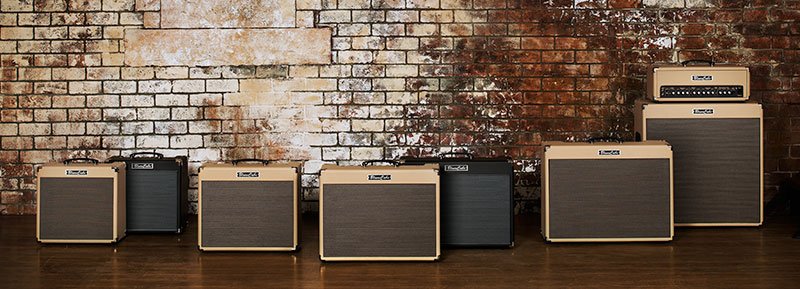
To make sense of this story, we’ll need to start by looking at what makes an electric guitar amplifier unique.
Electric guitar amps typically have a “voice”, due to the way that they’re built. That is, any electric guitar amplifier imparts its own sonic, midrange character on the guitar sound. This simple fact harkens back to the rise of the electric guitar, from the 1920s through to the 1950s. When guitar manufacturers began to install early magnetic pickups on the popular “jazz box” guitars of the day, the theory was that by plugging into an audio amplifier (quite a new invention at the time), a perfect replication of the hollow body guitar’s acoustic tone was achievable at louder volumes. What these early experiments quickly displayed however, was that the resulting tone was far from a perfect reproduction.
Due to the tonal artefacts and harmonic colouring of vacuum tube technology, along with the extreme tonal coloration of using any single-speaker system, manufacturers instead found that the resulting tone carried a strong midrange focus, with attenuated treble response.
As luck would have it, although the result was far from a perfect replication of the acoustic tone at a louder volume, the world loved this new guitar sound. The electric guitar rocketed into popularity through the jazz era, going positively stratospheric once rock and roll entered the picture in the 1950s.
The 1960s ushered in the dawn of experimentation and musicians discovering that pushing an electric guitar amp to its operational limits will cause the circuit to overdrive and distort in a way that is very sonically pleasing. This paved the way for the electric guitar amp industry that we see today, where the amplifier is considered as much of an instrument as the guitar is. Even modern amps are based on the fundamental characteristics of the first guitar amplifiers, namely tube-style tonality (both clean and overdriven), using a single speaker system (usually 6 to 12 inches in diameter), delivering a strongly coloured midrange and an attenuated treble response.
*For more information on electric guitar amp technology, check out our article here.
Acoustic amps – a “truer” voice
Anyone who has ever plugged a pickup-equipped acoustic guitar into an electric amp will have no doubt experienced the tonal effects we discussed above. Instead of the crystalline pure sound that we expect to hear from an acoustic guitar, when plugged through an electric guitar amp, the sound tends to be “boxy” or “nasal”, with an increased propensity for feedback.
Acoustic guitar amplifiers have little in common with their electric counterparts. As we saw earlier, an electric guitar exists to impart its sonic signature on a guitar tone, usually with a favour towards overdriven tones. An acoustic guitar amplifier however, exists to sound as tonally neutral as possible, with a “flat” frequency response and the lowest possible levels of distortion.
In fact, an acoustic amplifier is closer in design to a PA speaker, or a hi-fi stereo system than an electric guitar amplifier. The core philosophy is to deliver the truest possible representation of an acoustic guitar sound, which generally occurs by using low distortion, solid-state amplification and woofer/tweeter dual speaker systems, with the ability to reproduce all acoustic guitar frequencies from full lows to sparkling highs.
To this end, it stands to reason that you can achieve much more satisfactory results for amplifying an acoustic guitar with a simple PA speaker, than you can with an electric guitar amp. This is probably true, so why should you consider a dedicated acoustic guitar amplifier instead?
Features designed especially for acoustic guitar players
Like any musician, acoustic guitar players have very specific sets of needs. Built with acoustic guitar players in mind, acoustic amplifiers offer features such as:
Tailored EQ
There are certain fixed frequencies that can take out the “boxiness” of an amplified acoustic tone, as well as make it “bigger” (without booming) and fine tune the amount of “sparkle” or “air”. Acoustic amps usually have their EQ controls voiced with these factors in mind, specifically designed to enhance acoustic guitar tonality.
Feedback Control
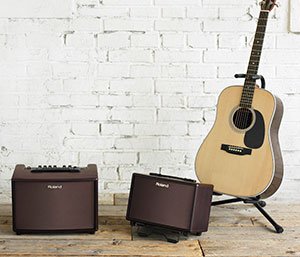 The core design of an acoustic guitar is to create acoustic resonance – which also turns it into a particularly effective feedback trap. Sound waves from amplifiers enter through an acoustic guitar’s sound hole and resonate within the guitar’s body cavity – creating an audio feedback loop that manifests as loud howling sounds through the amplifier. Acoustic amplifiers usually exhibit anti-feedback technology that utilise phase control or notch filters that allow the player to zone in on and eliminate problematic feedback frequencies. The popular Roland Acoustic Chorus series of amps go one step further, by offering an intelligent anti-feedback system that will automatically sense and resolve feedback issues itself, at the simple press of a button or switch.
The core design of an acoustic guitar is to create acoustic resonance – which also turns it into a particularly effective feedback trap. Sound waves from amplifiers enter through an acoustic guitar’s sound hole and resonate within the guitar’s body cavity – creating an audio feedback loop that manifests as loud howling sounds through the amplifier. Acoustic amplifiers usually exhibit anti-feedback technology that utilise phase control or notch filters that allow the player to zone in on and eliminate problematic feedback frequencies. The popular Roland Acoustic Chorus series of amps go one step further, by offering an intelligent anti-feedback system that will automatically sense and resolve feedback issues itself, at the simple press of a button or switch.
Guitar Specific Effects
Anybody who has ever delved into the deep-editing parameters of a good reverb unit will realise how complex it is. This is because reverb is not a one-size-fits-all approach, and the multiple parameters such as type, length, mix, diffusion, pre-delay, HF Damp, LF Damp all require tweaking to fine levels for optimising different voices/instruments. A good acoustic amplifier comes with reverb algorithms already optimised specially for acoustic guitar. The Chorus effect found on the Roland Acoustic Chorus amplifiers for instance, has been specially tweaked for the specific range of the acoustic guitar, along with especially wide stereo imaging.
Mic Input
As we determined earlier, acoustic amps are much like PA systems in that they work best when voiced with a flat frequency response for accurate sound reproduction. This being the case, most acoustic amplifier manufacturers, recognising that many guitar players also sing, will include an additional input for a vocal microphone – using the industry standard XLR microphone connector plug.
BOSS Acoustic Singer amplifiers – the acoustic stage amp redefined
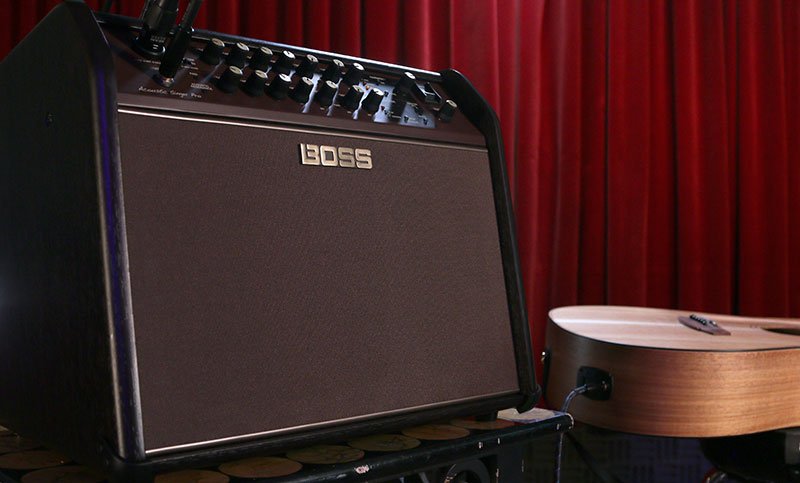
Released at the 2017 NAMM show, the BOSS Acoustic Singer amplifiers have set the stage to redefine acoustic amplification. As well as combining all of the features we mentioned earlier with cutting edge amplifier and speaker technology for pristine, natural sound, the Acoustic Singer amps have upped the game by applying as much consideration and features to vocalists as guitar players.
They are arguably the first ever instrument amp to feature a vocal channel as a core feature, rather than an afterthought. Acoustic Singer amplifiers offer two discrete channels, one guitar channel and one vocal channel, each with their own specially voiced EQ, specific effects and independent anti-feedback tools.
The onboard, 40-second looper is capable of looping both the guitar and microphone channels, allowing the user to create large-scale, layered soundscapes…..all with footswitch control.
Perhaps most exciting is the onboard HARMONY function, which adds intelligent auto-harmony to the mic input. The Acoustic Singer amp is able to “listen” to the chords and key that the guitar plugged into the instrument input is playing. When a singer plugs into the MIC channel and begins to sing, the Acoustic Singer amp will add a single line of voice harmony that is in the correct diatonic key with the guitar player. The effect is as if two people were singing simultaneously. The user can select either LOW, HIGH or UNISON harmonies, with the ability to footswitch them on or off.
Acoustic amps for acoustic players
As we have seen, an acoustic guitar amplifier is a remarkably different animal to an electric guitar amp. If you are an acoustic player of any level, it is certainly a worthwhile endeavour to head down to your local store and experience the level of depth and clarity that an acoustic guitar amplifier can bring to your instrument.
For more information on the venerable Roland Acoustic Chorus series, and the exciting new BOSS Acoustic Singer amplifiers, check out the links below.
Related Articles
TIPS AND TRICKS FOR ADVANCED LOOPERS
ARE YOU STUCK IN A VOCAL RUT?

